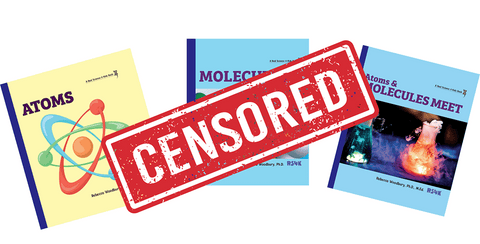Choosing the right science program for your child is a crucial decision that can significantly impact their educational journey and future success. With so many options available, it can be overwhelming to determine the best fit. This ultimate guide provides you with practical steps to choose a science program that will set your child up for success, focusing on foundational concepts, the format of the materials, and the importance of hands-on learning.
Step 1: Examine the Table of Contents and Look for Foundational Concepts
Before purchasing a science program, take a close look at the table of contents. A well-structured program should deliver more than a list of random facts; it should be organized into major subject headings such as chemistry, biology, physics, astronomy, and geology. This organization ensures that content is comprehensive and logically sequenced, making it easier for students to understand and retain the material.
In addition, a strong science program should cover the basic building blocks of science, ensuring that students develop a solid understanding of essential concepts. When evaluating science programs, make sure they include:
- Atoms and Molecules: Understanding the fundamental components of matter is crucial for grasping more advanced topics in chemistry and physics.
- Cells: The building blocks of life, a thorough understanding of cells is vital for studying biology and life sciences.
- Force and Energy: These are fundamental concepts in physics that explain how objects interact and move.
Programs that introduce these topics early on provide a strong foundation that students can build upon as they progress through their education.
Step 2: Be Cautious About NGSS Alignment
While the Next Generation Science Standards (NGSS) aim to improve science education, they use a learning progression that is considered outdated, particularly for chemistry. Many NGSS-aligned programs exclude foundational topics like atoms and molecules from the elementary curriculum, which can hinder your child's understanding of basic scientific principles.
Step 3: Prioritize Print Materials
While digital resources are becoming increasingly popular, print materials have several advantages when it comes to learning:
- Less Distraction: Print materials help students focus better without the distractions that come with digital devices.
- Retention and Comprehension: Studies have shown that students often retain and comprehend information better when reading from print materials compared to screens. https://doi.org/10.1111/1467-9817.12269)
- Ease of Use: Print books are easy to use, don't require batteries, and can be accessed anytime, anywhere.
Use digital resources to augment print materials, such as for interactive simulations or supplementary videos, but prioritize print as the primary medium for learning.
Step 4: Emphasize Hands-On Experiments
Science is best learned by doing, and hands-on experiments are an essential component of a high-quality science program. Here’s why they matter:
- Engagement and Interest: Experiments make learning fun and engaging, helping students develop a genuine interest in science.
- Practical Understanding: Hands-on activities allow students to apply theoretical concepts in practical scenarios, reinforcing their understanding.
- Critical Thinking: Experiments encourage students to ask questions, make observations, and think critically about the results.
However, be cautious about STEM kits that resemble toys more than educational tools. These kits may be fun but often lack the depth needed for meaningful learning. Instead, look for programs that offer well-designed experiments aligned with the curriculum’s educational goals.
Step 5: Assess the Program’s Pedagogical Approach
A good science program should use teaching methods that are evidence-based and aligned with modern cognitive research:
- Inquiry-Based Learning: This approach encourages students to explore, ask questions, and discover answers, fostering a deeper understanding of scientific concepts.
- Scaffolded Learning: Programs that build on previous knowledge with progressively challenging content help students master complex topics over time.
- Visual and Interactive Elements: Look for programs that incorporate diagrams, illustrations, and interactive elements to enhance understanding and retention.
Choosing the right science program for your child is a critical step in ensuring their academic success and fostering a lifelong love for learning. By focusing on foundational concepts like atoms, molecules, cells, force, and energy; being cautious about NGSS alignment; prioritizing print materials; emphasizing hands-on experiments; assessing the pedagogical approach; and examining the table of contents, you can make an informed decision that will benefit your child’s education.
Invest in a science program that combines these elements effectively. Real Science-4-Kids offers a comprehensive curriculum that meets these criteria, providing engaging, hands-on, and evidence-based science education. Take a look at our books to start your child on the path to scientific excellence.





Comments (0)
There are no comments for this article. Be the first one to leave a message!